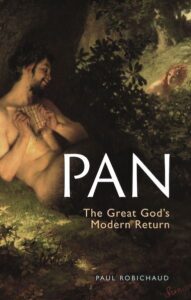 Ask most people to describe the ancient Greek god Pan and – assuming they know a bit about classical mythology – they’ll likely mention that he is part goat and part human, and associate him with the spirit of the fields and forests, of untamed freedom, and perhaps also of unrestrained lust. And they’d be right in each one of those points, however their explanations would still be far from complete in encompassing all the ways he has been understood from his earliest days of classical antiquity right up to the present day.
Ask most people to describe the ancient Greek god Pan and – assuming they know a bit about classical mythology – they’ll likely mention that he is part goat and part human, and associate him with the spirit of the fields and forests, of untamed freedom, and perhaps also of unrestrained lust. And they’d be right in each one of those points, however their explanations would still be far from complete in encompassing all the ways he has been understood from his earliest days of classical antiquity right up to the present day.
It is this long history of variation in both what he is and what he represents that Prof. Paul Robichaud‘s recent book Pan; the Great God’s Modern Return explores. By examining how the god has been understood and represented down through history, Prof. Robichaud presents a multifaceted and remarkably changeable portrait of a deity whose history is filled with mysteries, tricks, and turnings as represented in the wealth of stories, songs, and images in which he has appeared.
Indeed, even the meaning of his very name contains an uncertainty depending upon which Greek word it is assumed to be derived. And while Pan is often seen as the life-affirming, horny, goat-loined embodiment of fecundity famous for chasing nymphs through forests and fields, or alternately as the Christian devil, he has through other stories also been portrayed as the truth behind the veil of illusion that protects us from coming-face-to-face with a reality that is beyond our mind’s ability to comprehend, as well as a benevolent protector, friend, and companion to those who (whether they go about on two feet, four feet, wings, or on their bellies) otherwise have precious few of any of these.
As of this writing I’m nearly finished with a reading of Prof. Robichaud’s Pan, which I’ve been finding very interesting – as well as enlightening – indeed, and I’m confident that this will be a book well worthy of a full-length review in the weeks to come.
If you enjoyed reading this, please consider signing up for The Well-read Naturalist's newsletter. You'll receive a helpful list of recently published reviews, short essays, and notes about books in your e-mail inbox once each fortnight.
